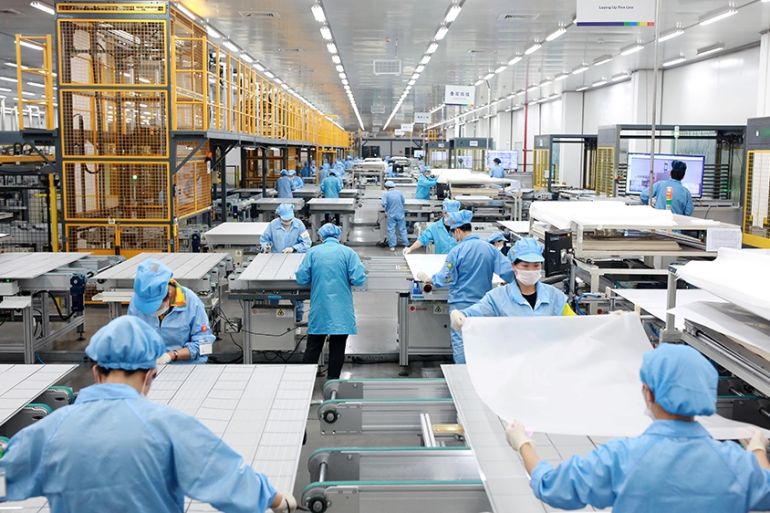Chinese factory prices flatten, but consumer prices jump in June
Swine fever outbreak in Africa forces a mass cull of pigs, sharply raising food prices in China.

China’s producer prices unexpectedly showed no growth in June from a year earlier, raising concerns a slowdown in manufacturing activity will further drag on economic growth.
On the other hand, June’s consumer price growth in annual terms matched a 15-month high seen in May as supply shortages triggered by an African swine fever outbreak and extreme weather conditions continued to push up pork and fruit prices.
Keep reading
list of 4 itemsWhy is Germany maintaining economic ties with China?
Behind India’s Manipur conflict: A tale of drugs, armed groups and politics
China’s economy beats expectations, growing 5.3 percent in first quarter
China’s producer price index (PPI) in June was flat from a year earlier, the National Bureau of Statistics (NBS) said in a statement. That compared with a 0.6 percent rise in May and a gain of 0.3 percent forecast by economists in a Reuters poll.
The change in the PPI was the lowest since August 2016 when the index last fell year-on-year.
A cooling in producer prices, seen as a gauge of industrial demand that gives momentum to investment and profits in the Chinese economy, may rekindle worries about deflation and prompt the authorities to launch more aggressive stimulus.
Upstream sectors were particularly weak, with prices for oil and natural gas extraction down 1.8 percent from a year earlier, the NBS data showed. Price gains in the coal mining sector also eased.
Although Beijing and Washington reached another truce in their trade war last month, economists expect continuing pressure on the Chinese economy as manufacturers shift more production abroad to avoid United States tariffs on China-made goods.
China’s factory activity shrank more than expected in June as tariffs and weaker domestic demand hit new orders for goods.
Beijing is fast-tracking more infrastructure projects but prices for some construction materials remain lacklustre.
Spot prices for steel rebar in June lingered below the levels of a year earlier and may worsen in the following month due to seasonal slackening of construction activity amid high temperatures and rainfall in summer.
Help at hand?
Premier Li Keqiang pledged earlier this month to implement financing tools, including cuts to the amount of reserves commercial banks need to maintain with the central People’s Bank of China (PBOC), to support small and private firms, adding to expectations for further stimulus measures.
At the same time, however, he and other top policymakers have reiterated that China will not resort to large-scale stimulus.
“The PBOC and the economy will likely maintain an easing bias, rather than tightening,“ Chang Jian, Barclays Bank PLC’s chief China Economist said on Bloomberg TV, noting that the central bank has been flooding the markets with liquidity after the takeover of a small lender caused inter-bank lending issues. “We do see some downward pressures to the data coming next week.”
The consumer price index (CPI) in June rose 2.7 percent in annual terms, driven by higher food prices. Fruit prices surged 42.7 percent from a year earlier while pork prices rose 21.1 percent.
Analysts polled by Reuters expected consumer prices to rise 2.7 percent, matching the pace seen in May.
The food price index in June rose 8.3 percent year on year, picking up from May’s reading of 7.7 percent.
On a month-on-month basis, CPI fell 0.1 percent in June after remaining unchanged in May.